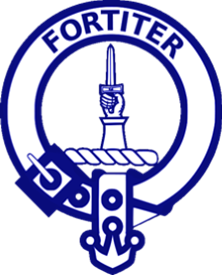Getting Started in Genealogy
Research Tips
The first thing you need to do in getting started searching your family tree is to talk to your family. Ask your parents, grandparents, aunts, uncles, anyone who is willing to share with you.
The genealogy questions you will want to ask are:
- When and where were they were born?
- Where did they grow up?
- What are/were their parents names?
- When were their parents married and where?
- Where are their parents buried and when did they pass away (name of cemetery, city, state)
- Is there a grave stone? Is there a photo?
- Who were their aunts and uncles?
- Are any other family members buried there or close by?
- Do they have any old photos, newspaper clippings, birth/wedding/funeral announcements?
- Who is their oldest living relative?
- Make plans to visit this person as soon as possible!
When you go to ask genealogy questions - bring a notebook, pencil, tape recorder (with fresh batteries), lots of blank tapes, and a camera. Having too many tapes is better than hearing a great story and having the tape run out half way through. Or what if you find out there is a great Aunt living close by and have run out of tapes? You can never have too many.
When you go to visit, tell the person you are going to record the conversation and place the microphone close to them. Some folks report that a tape has some great stories on it but the sound quality is so poor that the listener can barely make out the words.
It is important to ask about all the dates and places but don't forget to ask for the stories. What was Aunt Polly like? Why did Uncle Mike never marry? Why did the family leave Arkansas and travel to Oklahoma? These stories are fun to hear but are also a great wealth of information for genealogists because they give clues for places to continue searching.
Many times, a simple inquiry to a grandparent about a date will result in a tale that reveals courage, strength or a glimpse into a past culture. This (mostly) oral tradition is of priceless value and needs to be preserved. A people without traditions have no "roots" or connection to their past and are like twigs adrift on the sea of history. Quite simply, people with a sense of tradition tend to make better life choices and tend to inculcate better values in their children. All members in a society benefit from this.
A camera and scanner are also important tools. Many people will be more than happy to let you see their old pictures but reluctant to let you have them to make copies. If you have a camera or scanner, you can make digital copies on the spot.
Write everything down, even if it seems trivial. That seemingly trivial piece of information may be the clue you need 6 months later. Thoroughly record when, and where, you got your information. See Notes on Sources for more information.
The last first step you will need to do is to transfer all of this information onto family history or pedigree charts or genealogy software. These forms vary in layout but all do the same basic function. You can download and print a free Ancestral Chart or Family Group Record here. Print as many as you need. Begin grouping your information by family. It is important to do this because later, when you have lots of information, you will not have to spend hours looking for a particular record. And, don't forget to include your sources so future researchers do not have to reproduce your research.
What next? Now the detective work begins. Take the info you know and start looking for records. One of the first places you should start is with the census records. You will start to learn where your family lived and in what counties. Most counties will provide certified copies of death certificates, which usually list the deceased's parents. Then take this information to search for other genealogy documents such as obituary notices, tax records, land records, wills etc. Each bit of information will add another piece to the puzzle.
The Family History Center offers a series of free, 5-minute video tutorials on genealogy. To view the list of videos, visit the Family History Learning Center.
Good luck!

